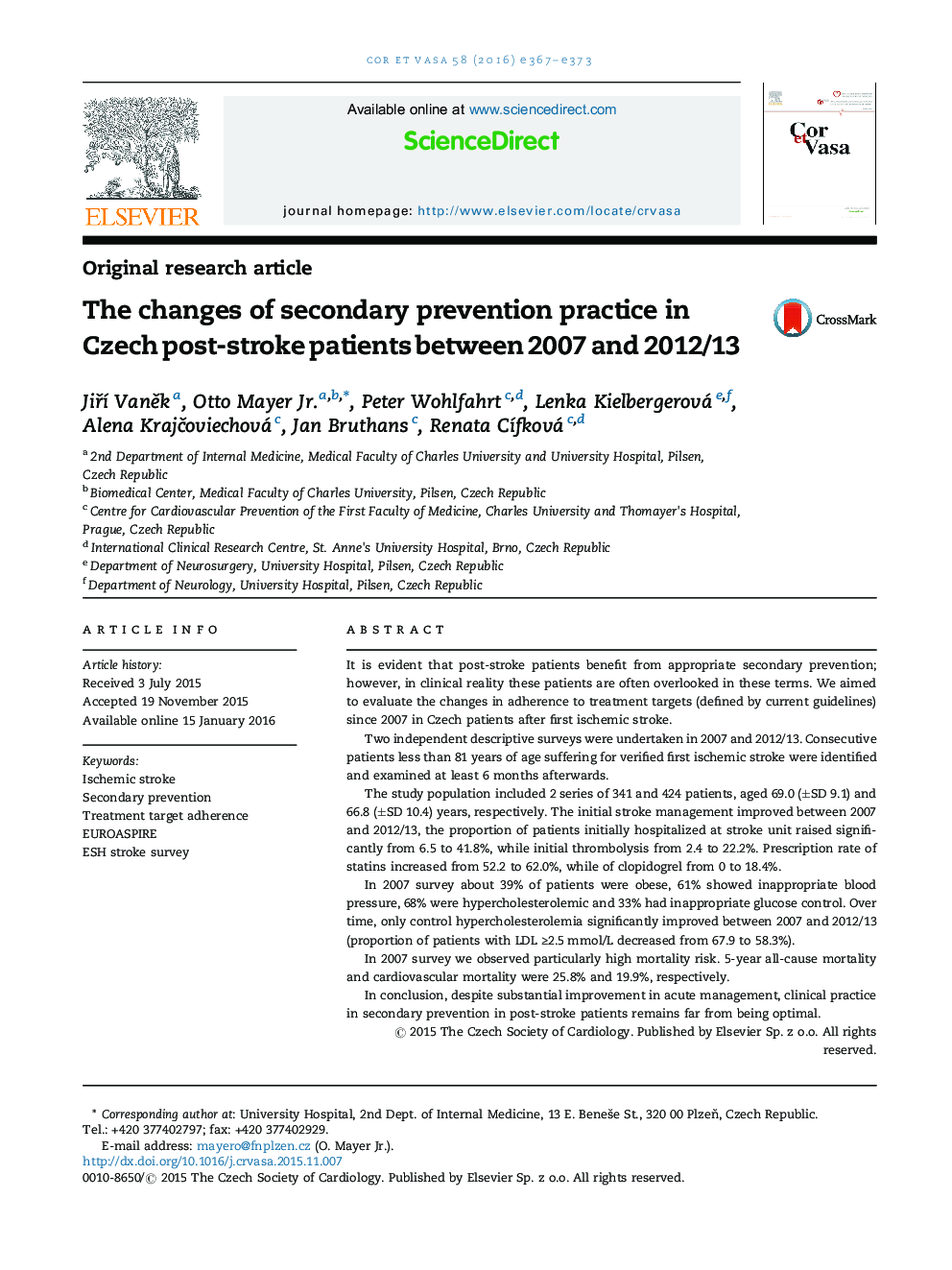| Article ID | Journal | Published Year | Pages | File Type |
|---|---|---|---|---|
| 2732962 | Cor et Vasa | 2016 | 7 Pages |
It is evident that post-stroke patients benefit from appropriate secondary prevention; however, in clinical reality these patients are often overlooked in these terms. We aimed to evaluate the changes in adherence to treatment targets (defined by current guidelines) since 2007 in Czech patients after first ischemic stroke.Two independent descriptive surveys were undertaken in 2007 and 2012/13. Consecutive patients less than 81 years of age suffering for verified first ischemic stroke were identified and examined at least 6 months afterwards.The study population included 2 series of 341 and 424 patients, aged 69.0 (±SD 9.1) and 66.8 (±SD 10.4) years, respectively. The initial stroke management improved between 2007 and 2012/13, the proportion of patients initially hospitalized at stroke unit raised significantly from 6.5 to 41.8%, while initial thrombolysis from 2.4 to 22.2%. Prescription rate of statins increased from 52.2 to 62.0%, while of clopidogrel from 0 to 18.4%.In 2007 survey about 39% of patients were obese, 61% showed inappropriate blood pressure, 68% were hypercholesterolemic and 33% had inappropriate glucose control. Over time, only control hypercholesterolemia significantly improved between 2007 and 2012/13 (proportion of patients with LDL ≥2.5 mmol/L decreased from 67.9 to 58.3%).In 2007 survey we observed particularly high mortality risk. 5-year all-cause mortality and cardiovascular mortality were 25.8% and 19.9%, respectively.In conclusion, despite substantial improvement in acute management, clinical practice in secondary prevention in post-stroke patients remains far from being optimal.
